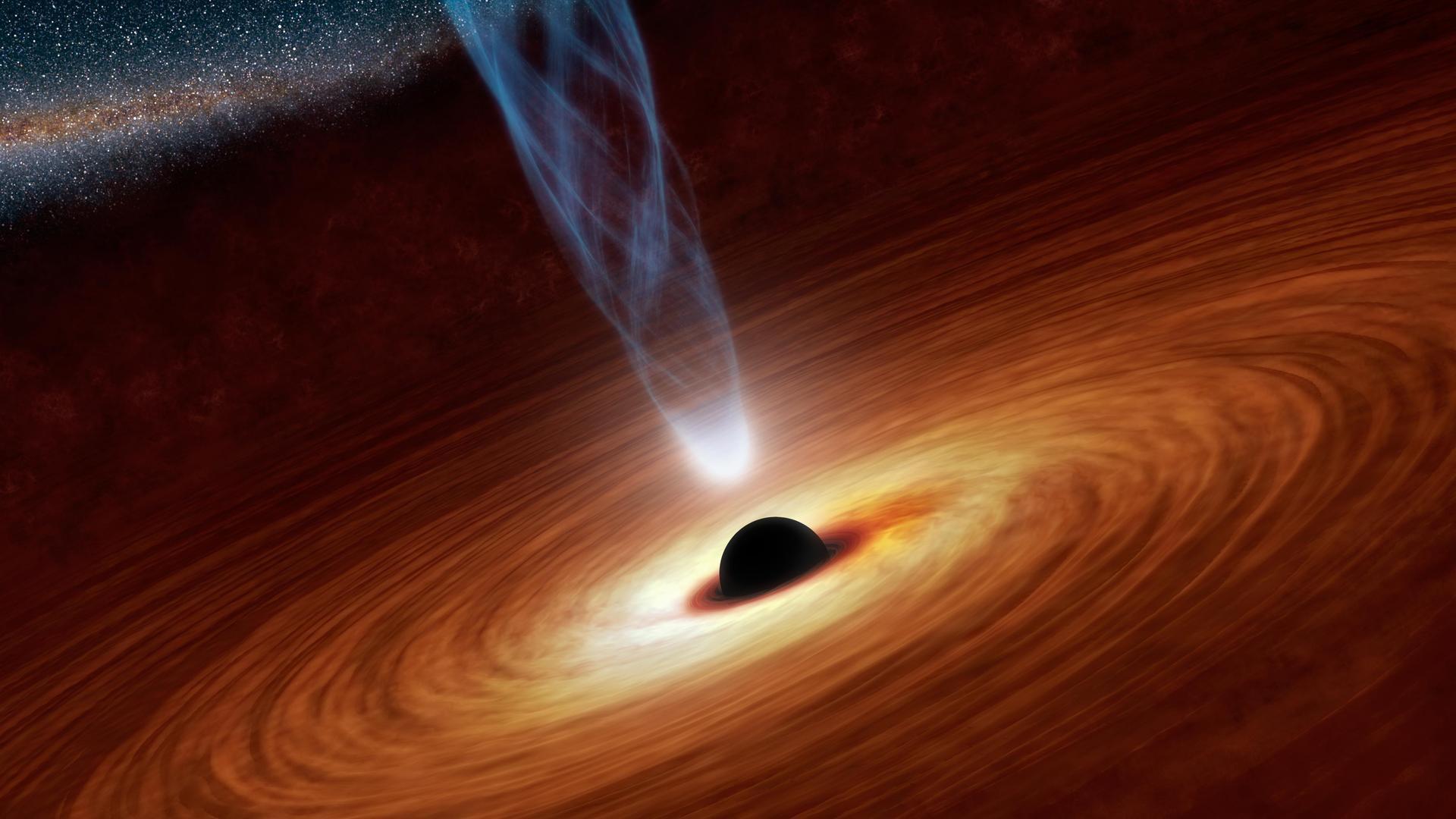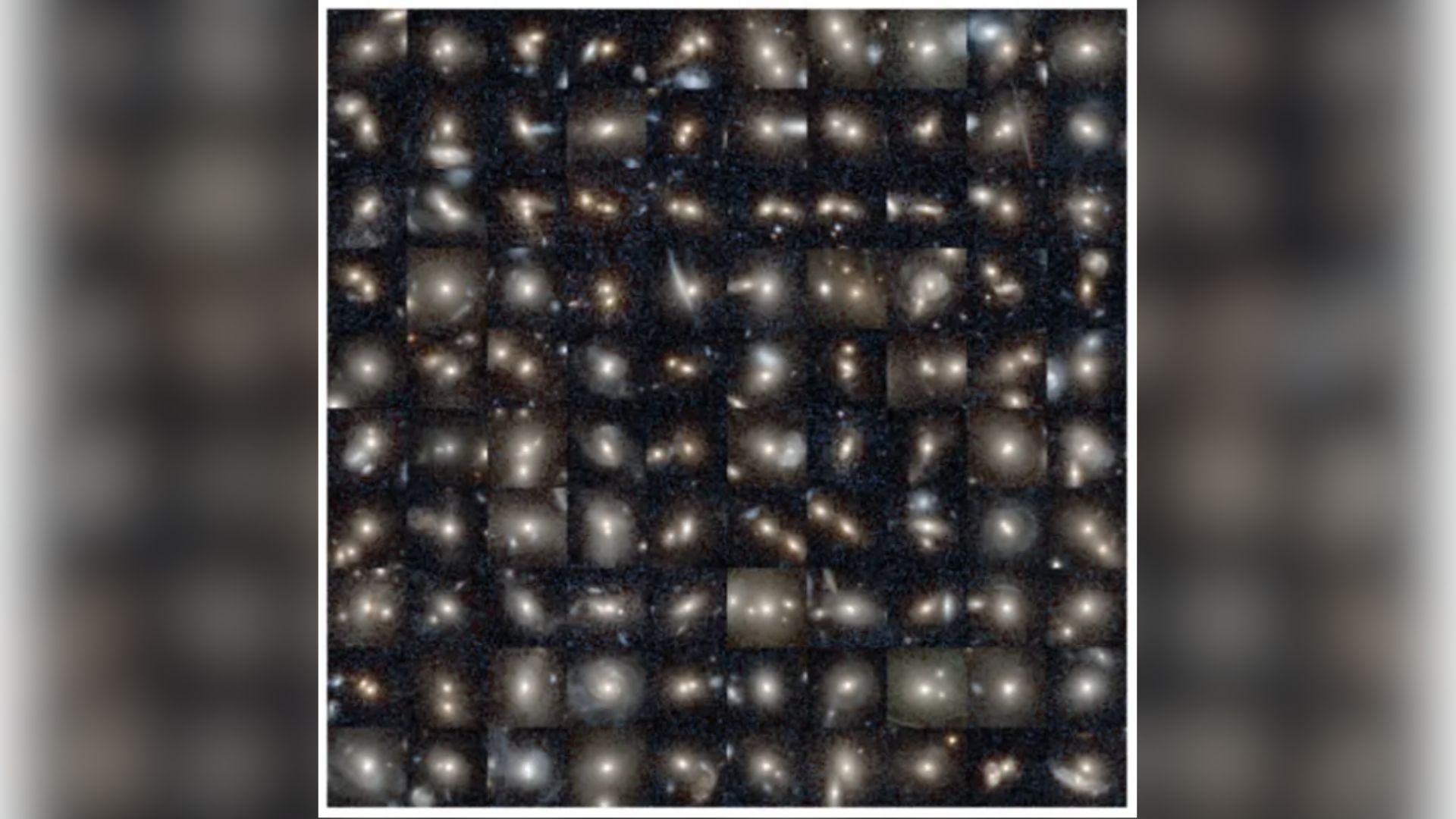How did supermassive black holes get so big and chonky? Scientists still don't know.

Paul M. Sutter is an astrophysicist at SUNY Stony Brook and the Flatiron Institute, host of Ask a Spaceman and Space Radio, and author of "Your Place in the Universe." Sutter contributed this article to Space.com's Expert Voices: Op-Ed & Insights.
Active galaxies are by far the brightest objects in the universe, and they are powered by monster black holes that lie at their centers. But finding the origins of those giant black holes has proven challenging for astronomers. New observations underscore that difficulty.
Although simulations suggest that black holes should grow quickly in the early universe, when astronomers look back in time they simply cannot find many such structures. That struggle continues even now, with new research that describes a hunt for such objects.
The making of a monster
Let's backtrack. The largest black holes in the universe are real whoppers, millions and even billions of times more massive than the sun. To reach such incredible sizes they've consumed an all-you-can-eat buffet of gas over billions of years, constantly gorging themselves on whatever falls into their gravitational embrace.
But these supermassive black holes must have also started off larger than average, to give them a jumpstart in their path to cosmic corpulence. We're not exactly sure what seeded the universe's supermassive black holes, but there are two main schools of thought.
Related: Images: Peering back to the Big Bang & early universe
In one line of thinking, supermassive black holes got their start with the first generations of stars to appear in the cosmos. These stars, made of pure hydrogen and helium (because there weren't any heavier elements around back then), grew to massive proportions, perhaps as much as hundreds of times the size of the sun. They lived fast and died quickly in titanic supernova explosions, leaving behind collapsed cores — the first big black holes.
Breaking space news, the latest updates on rocket launches, skywatching events and more!
Or, perhaps the first and biggest black holes were never stars at all. Instead, perhaps such objects formed when a cloud of gas went unstable and collapsed. That would explain why massive black holes appear so early in cosmic history, and how they could get so big so quickly.
Blaze of glory
Whatever the case, the seeds of today's monsters were laid in the very early universe, when it was less than a billion years old. But, as big as these objects were when they were born, they still had to gorge themselves to become the true monsters that they are today. Computer simulations of the behavior of stars, black holes, galaxies and gas in the early universe suggest that these black holes grew quickly, reaching their hulking state within just a few hundred million years of their formation.
Astronomers know how to spot such gorging black holes: Feeding black holes form the hearts of active galaxies. As all that gas crams down the throat of a black hole's event horizon, it compresses and heats up to millions of degrees. That hot gas emits scorching X-rays so bright they can be seen from billions of light-years away. So when we see a giant, glowing source of X-rays in the sky, we know that trillions of tons of gas are falling into a black hole.
But whereas scientists have spotted hundreds of thousands of active galaxies in the nearby universe, we have only seen a handful in the young cosmos. (Because light takes time to travel, studying distant corners of the universe is the equivalent of looking back in time.)
That said, the active galaxies that scientists have found at extreme distances and therefore in the past are extremely powerful. For example, the most distant known active galaxy, dubbed ULAS J1342+0928, was alive and well when the universe was only 690 million years old and hosted a supermassive black hole with a mass of 800 million times that of the sun.
Searches in the deep darkness
Although these giant active galaxies are awesome, what scientists really want to know is whether they are typical of the early universe or off-the-chart extremes.
In a recent study, scientists suggest that the known active galaxies in the young universe are the exception, not the rule. Using a combination of observations taken by NASA's Chandra X-ray Observatory and probes that see in longer wavelengths, the astronomers were able to identify possible candidate active galaxies in the young universe across a wide chunk of the sky.
And after sifting and sorting through data, they made a list of all their candidates. That is, all five of them. That's right, in their entire search field of the early universe they only found five active galaxies, and due to uncertainties in measurements those galaxies may actually be much closer to us and much more recent after all.
These findings seem to contradict simulations that suggest that supermassive black holes should have experienced growth spurts before the universe turned two billion years old and thus be common at such vast distances. While we can point to a few, they seem more like oddballs than a stop along the typical journey of a supermassive black hole.
So how do we go from seeds in the very early universe to the giant black holes we see today? As of now, we're all in the dark.
The research is described in a paper posted to the preprint server arXiv.org on Jan. 16 and accepted for publication by the Astrophysical Journal.
- The biggest black hole findings of 2019
- NASA unveils amazing cosmic views as Chandra X-Ray Observatory turns 20
- Weird black hole physics revealed in NASA visualization
Ask your own question on Twitter using #AskASpaceman or by following Paul @PaulMattSutter and facebook.com/PaulMattSutter. Follow us on Twitter @Spacedotcom and on Facebook.
OFFER: Save 45% on 'All About Space' 'How it Works' and 'All About History'!
For a limited time, you can take out a digital subscription to any of our best-selling science magazines for just $2.38 per month, or 45% off the standard price for the first three months.

Paul M. Sutter is a cosmologist at Johns Hopkins University, host of Ask a Spaceman, and author of How to Die in Space.

